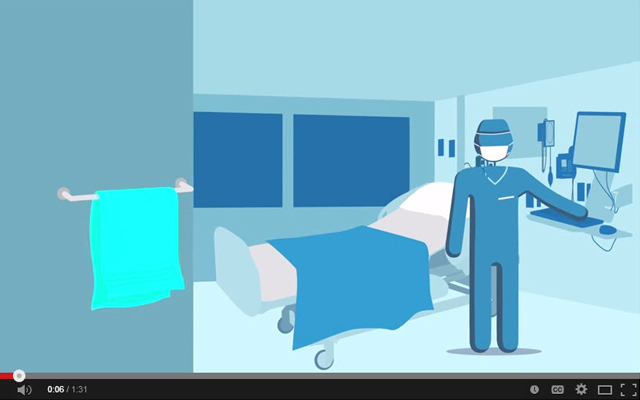Going Unplugged for 24 Hours
G&K Services Invests to Continue Growth in North Dakota
Current Global Shortage of Textiles
Apple to work with US defense department on developing wearable tech
Dollars and Sentiments – The Real R.O.I. on Social Marketing
Value Opportunities
 We are presented frequently with the opportunity to add value to our stakeholders and be aware that possibilities present themselves in various ways often at unexpected times. In this article I want to discuss how such situations presented to me, to someone I recently met and one for you as well.
We are presented frequently with the opportunity to add value to our stakeholders and be aware that possibilities present themselves in various ways often at unexpected times. In this article I want to discuss how such situations presented to me, to someone I recently met and one for you as well. Last week I received a call from a client complaining that the seat seam had failed on less than 1/10 of one percent of the stock pants we had shipped recently. My approach in this type of problem solving follows the medical model of 'first do no harm' and then 'stop the bleeding.' I spoke with our production manager and learned that the operation we were utilizing was not the best technique. I ordered the factory to stop production at this operation immediately. Although the failed percentage was very small, it made no sense to continue to produce with the incorrect method and risk further seam failure. But in the real world in which we exist versus the hypothetical problem world, we need to make delivery dates. Please know that my client had originally accepted the approval samples with the incorrect sewing method. Technically we were covered but I am not interested in winning the battle and losing the war. The war in this case is to look out for the interests of my client by taking care of the needs of my client's customers.
We know the right method to use and I ordered a machine that will be delivered within one week of diagnosing the problem. And we will work extra time to make up any short fall in delivery. But the pants will be done right for now and for the future. Employing "double loop” learning enables us to take care of the cause of the problem and not just deal with the symptom. My client had wanted to take the risk, since the defect rate was so minute, of making another week's worth of production with the incorrect method. To the wearer of the pants, one seam blow out is one too many. Here the opportunity presented to improve quality, add value and engender trust that we perform on our promise of quality.
In many situations there is often little time to plan for improvements and you've got to think on the fly. If adding value is part of your culture the opportunities should become obvious. I met a very successful retired executive, name Richard, this week who told a story of how he thought quickly and seized an amazing opportunity that added multi-billions of dollars in very profitable sales for his company. Some of you may remember the Commodore computer which was a very early, if not the first, compact or portable computer. This executive, who holds a CPA, was hired away from Arthur Anderson to work for Commodore which at the time was making calculators and digital watches. When he first entered the office he noticed a gentleman saying his "good-byes' to the staff. Richard walked up and asked the man who he was and why he was leaving. The man responded that he was an inventor and was leaving the company because he surmised that a new executive team would mean that he would automatically be losing his job.
How to Prevent Linen Losses: An $840+ Million a Year Problem...
Tools of the Trade: Part 2 – Email Marketing, Subject Lines…...
![]() In December, UniformMarket News began a multi-part series entitled "Tools of the Trade," focusing on the various communication instruments used to attract and retain customers. Part 1 covered the basics of email marketing – what it is and why you should use it. In case you missed it, click here to read the article.
In December, UniformMarket News began a multi-part series entitled "Tools of the Trade," focusing on the various communication instruments used to attract and retain customers. Part 1 covered the basics of email marketing – what it is and why you should use it. In case you missed it, click here to read the article.
This month, we delve a bit deeper, exploring ways to make your emails more relevant, and thus, more likely to be opened. Getting to a person's inbox in one thing; having your message read and, hopefully, converted into a sale, is an entirely separate matter.
A word to last month's readers: if you recall reading that Part 2 would appear exclusively in Made to Measure, you are correct, that is indeed what we said. But since the subject is so important, and there is so much to say, email marketing will now span three parts of the series, with Part 3 appearing in Made to Measure this February.
Still Relevant, But One of Many
For years, marketers have used email to reach customers and prospects, citing its ease, quickness and effectiveness as a channel of communication. Never meant to replace other efforts, it is used as a marketing adjunct, a way to reach customers in an ever changing and hi-tech world.
And now that world is changing again. The advent of social networking, Twitter, Facebook and other sharing sites, have caused some to suggest that email is on the way out; articles on the topic appear frequently, including one oft-mentioned Wall Street Journal piece.
Yet news of its demise is premature. Online communication patterns are shifting, with customer preferences changing at rapid-fire pace, but email still plays a pivotal role, and is still the form most used to share information. "To say that email marketing is dead is to say the telephone or direct marketing is dead," says Dan Mendelson, president of Unitex Direct, a Michigan distributor specializing in security and law enforcement wear. "Marketing always reaches a new level of sophistication, but the old forms don't go away completely." You just need to offer the channel that best suits an individual's needs and preferences, and in the uniform industry, at least for now, that vehicle is email marketing.
Superior Uniform Group Announces Third Quarter Operating Results
Soul Captains
 "It's not about shoes, it's about customer service." Says Zappos founder, Tony Hsieh. In a recent television interview about this dynamic mail order shoe company, sold recently to Amazon for $1.5 billion, we learn one lesson of success. Zappos customer service representatives are given the power to do whatever is necessary to make customers happy. One scene showed a rep speaking to a customer and going onto the Internet with her to locate a pair of shoes she had seen somewhere. We were told that the record for time spent on a customer service call was five and one half hours. While initially this seems to be an unbelievable amount of time think about the cost benefit relationship.
"It's not about shoes, it's about customer service." Says Zappos founder, Tony Hsieh. In a recent television interview about this dynamic mail order shoe company, sold recently to Amazon for $1.5 billion, we learn one lesson of success. Zappos customer service representatives are given the power to do whatever is necessary to make customers happy. One scene showed a rep speaking to a customer and going onto the Internet with her to locate a pair of shoes she had seen somewhere. We were told that the record for time spent on a customer service call was five and one half hours. While initially this seems to be an unbelievable amount of time think about the cost benefit relationship. Even at $35/ hour including taxes and overhead for a total expenditure I estimate a cost at less than $400 for this allotted time. That's the cost for the 5 ½ hour call but what might that investment be worth? If Zappos kept that customer for life they would easily profit from future sales. I am sure the customer shared this service story with many friends and positive referrals are always beneficial. Further I am now sharing the story with thousands of UniformMarket readers. So for their $400 investment I think Zappos got thousands worth of publicity. All the return on investment because of the culture of service set by the company founder.
We hear about these tremendous success stories even in these times of negative economic news. Fed Chairman Bernanke foretold more months if not years of anemic growth due to our rather severe downturn. Retail clothing sales were down an unexpected 1.2% in May. High unemployment lingers. Natural disasters such as the gulf oil spill will crimp the future of wildlife, cost billions and take years to clean up while visiting economic havoc on our neighbors in the South.
There's enough negative news to satisfy most fatalists. The more we study history or have lived it, we realize there have been other challenging times. World population continues to grow and all those people are consumer of goods and services. So how do we reconcile the disparity between opportunity and hard economic times? You may not be able to resolve this issue but we can improve our performance and results. When my golf swing goes awry, the professionals advise reviewing the fundamentals first. Checking one's posture, grip and alignment will usually reveal some facet of the mechanics that may have strayed out of line.
Which fundamentals in business can we search to check the mechanics of our success? Given the fundamentals are not new, there must be good reason for the longevity of age old wisdom. I turned to the classic work of Napoleon Hill and his 1937 book "Think and Grow Rich." If you have not read it now is the time and if you have read it there's no time like the present to review it. As with improving a golf swing, attention paid to just a few points will account for major improvement opportunity. (Pareto's Principle known as the 80/20 rule is another proven fundamental. For example, eighty percent of your sales come from twenty percent of your clients.) So don't be overwhelmed in reviewing the lessons for success. The rewards are self justifying.













